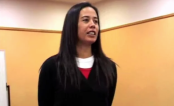Te Aho Arataki Marau mō te Ako i Te Reo Māori - Kura Auraki
Curriculum Guidelines for Teaching and Learning Te Reo Māori in English-medium Schools: Years 1-13
Curriculum guidelines 521 PDF (PDF, 4 MB)
Page navigation:
Te whakarite hōtaka reo
Programme planning
The New Zealand Curriculum provides schools with the overall framework and direction for planning and makes it clear that all schools are expected to provide their students with opportunities to learn te reo Māori. In its discussion of curriculum design and review (pp. 37–42), it describes the importance of ensuring that students’ learning pathways are well connected so that each stage of their journey prepares them for the next.
The achievement objectives in these curriculum guidelines provide a basis for planning school and classroom programmes and for determining a student’s current stage of development in te reo Māori. They are intended to help teachers work out what each student has achieved and what should be the next phase in their learning. While the achievement objectives indicate core language content at each level, the intention is that teachers will introduce language content at times and in combinations that will best meet the needs of their particular students. The possible socio-cultural themes, topics, and text types indicate important tikanga Māori content but, again, the intention is that teachers make deliberate selections with the needs and interests of their students in mind. By keeping careful records of each student’s learning journey, teachers can ensure that new learning experiences build on (but do not simply repeat) previous experiences.
Programme planning is primarily the teachers’ responsibility, but it is a responsibility that can be shared with the students themselves, with colleagues, and with whānau and community members. Planning always begins with teachers finding out about their students – who they are, what their learning needs and interests are, what they have already learned, and what they need to learn next (see The learners of te reo Māori). The appropriate level(s) of achievement objectives that relate most closely to their students' learning needs are selected. Learning outcomes clearly state how the students will demonstrate that they have met each achievement objective or a relevant part of it. Teachers share these outcomes with the students and work with them to construct success criteria (see Examples of relationships between achievement objectives and language learning contexts and Monitoring achievement). They plan sequences of learning tasks and opportunities that will enable their students to achieve those outcomes, and monitor what happens and make any changes that are needed to improve the teaching and learning. Information about how to derive learning outcomes from curriculum achievement objectives is available on TKI.
It is important not to introduce too much language too quickly or to attempt to cover every aspect of te reo Māori in school programmes. Overwhelming students with a lot of unfamiliar language denies them a genuine opportunity to learn the new material and could undermine their confidence and motivation. Effective teachers, particularly those who are highly proficient in te reo Māori, know how to provide comprehensible input: they introduce language that is appropriate for the age and current proficiency of their students and is also consistent with the chosen objectives of the relevant curriculum level.
These curriculum guidelines are intended for teachers of students who are learning te reo Māori in a limited amount of time. Satisfactory completion of level 8 indicates that students have a good grasp of many of the important aspects of te reo Māori and tikanga Māori, which will give them a solid basis from which to pursue further learning. However, this does not mean that their proficiency will match that of a native speaker of te reo Māori or a student who has spent the same number of years in a Māori-medium class.





